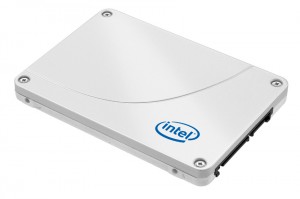 Intel’s streak of solid-state drive announcements continued yesterday, when the company announced a new line of SSD 330 drives for mainstream computers but with maximum storage capacity of only 180GB.
Intel’s streak of solid-state drive announcements continued yesterday, when the company announced a new line of SSD 330 drives for mainstream computers but with maximum storage capacity of only 180GB.
The SSDs are part of a new line of budget drives and come in capacities of 60GB (US$89), 120GB ($149) and 180GB ($234). However, for larger-capacity SSDs, customers will have to turn over to the older SSD 320 line of consumer drives, which come in capacities of up to 600GB but offer slower data throughput.
Many laptops such as Apple’s MacBook Air come with SSD storage, which is faster and more power-efficient than hard-drive storage. But SSDs are also more expensive and come in smaller capacities. There is a demand for larger-capacity SSDs at reasonable prices as storage needs go up.
An Intel spokeswoman did not comment on when SSD 330 would be available with capacities higher than 180GB, saying the company does not comment on unannounced products or speculate on future product offerings. However, Intel will continue to offer existing SSD 320 products with higher storage capacities.
An SSD 320 drive with 600GB capacity is available for $1,037 on Amazon.com. Four new 180GB SSD 330 drives combined could offer 720GB of storage for $936, but laptops may lack the number of slots to accommodate all drives.
The new drives could be targeted at those who want to upgrade storage on older PCs from hard drives to SSDs, said Jim Handy, director at analyst firm Objective Analysis.
“What’s happening is Intel is figuring out what to do with the price,” Handy said.
Intel could be providing drives at a particular capacity at a cheap rate, and those needing more capacity could move over to Intel’s more expensive and advanced SSD lines, Handy said.
Since the start of April, Intel has announced a rash of new drives made using the latest 25-nanometer process, which results in more power-efficient and faster storage than previous drives made using the 34-nanometer process. While the SSD 330 and 320 lines are made using the new manufacturing process, the newer drives could help speed up application performance within computers.
The SSD 330 drives are able to transfer data more quickly through compatibility with the SATA 6-gigabits-per-second interface, which provides double the throughput of the SATA 3Gbps interface used by the SSD 320 series. The SSD 330 drive provides sequential read speeds of 500MB per second and up to 450MB per second of sequential write speeds.
Intel has beefed up the overall capacity of its SSDs to 800GB with its new data centre SSD 910 series, which was announced last week. The SSD 910 series are single-level cell (SLC) drives, in which one bit of data is stored per cell. The SSD 330 drives are MLC (multi-level cell) SSDs, in which bits of data are stored at multiple levels in each cell. The SSD 330 MLC drives offer slower read and write speeds than the enterprise 910 SSDs.
Intel also offers the SSD 520 drives at capacities of up to 480GB, but the drives are targeted more toward gamers and enthusiasts.





